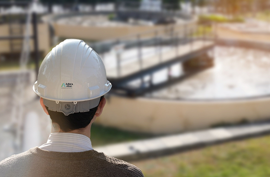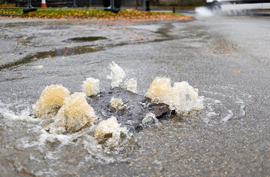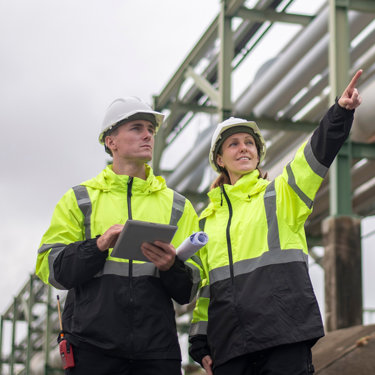5 things to consider following an industrial fire
Published: 27 May 2020
By: Bill Atkinson, Chief Scientific Adviser
In the year ending June 2019 there were just over 11,000 fires in non-domestic buildings. Risk assessment and emergency planning is key to minimising damage and getting your operation back up and running quickly and compliantly after a fire.
Here are five things to consider if you have a fire at your operation.
1. Firewater removal
If firewater gets into surface drains it can have a devastating effect on aquatic life. The fire service carry environmental containment equipment including drain covers to stop firewater getting into drains. But if an adequate containment area has not been designated for firewater, it has to go somewhere. This will be the lowest part of your site.
Once the fire has been extinguished the fire service is not responsible for removing the firewater, you the business owner are. And you can’t just let it go down the nearest surface drain as you could end up polluting a local waterway and be slapped with a huge fine.
An environmental risk reduction specialist, such as Adler and Allan, can visit your site and use vacuum pumps and tankers to remove the firewater and process it, making it safe to be discharged into a foul drain.
If you think firewater may have been released into the surface drains, experts can survey the local waterways to assess the impact and provide remediation such as hydrogen peroxide dosing to counter oxygen depletion.
2. Confirm the characteristics of hazardous materials
If you store hazardous materials on your site, the fire could have caused the chemical characteristics to alter, making them difficult to identify. Before continuing to use any materials, you should employ a specialist to characterise and certify them for you.
You should also employ a specialist if you need to dispose of any materials damaged in the fire. Disposing of materials incorrectly, even in error, will not be favoured by the relevant environment agency.
3. Structural damage
Fires can cause structural damage to buildings and containers. In addition to a structural engineer survey, any hazardous materials on your site should be inspected by a professional to certify the integrity of any containers to ensure they don't pose a spill danger. This would be a legal requirement before any containers could be transported.
4. The threat of spills
A fire can result in a large release of both hazardous and non-hazardous materials if the fire compromises their primary containment. Chemicals and oil pose obvious threats, but even non-hazardous materials such as milk or beer can also cause serious environmental issues if they end up in the water course. The presence of firewater can wash substances out of designated bund areas and onto other areas of your site. Specialists should be engaged to first determine the make-up of the firewater, and if other pollutants are mixed with it, determine the best course of action for removal and disposal.
5. Check your separators
Don’t forget to have your separators serviced after a fire to ensure firewater hasn’t entered into the system. The presence of degreasing agents or detergents in firefighting foam can significantly reduce the efficiency of separators in treating hydrocarbon contaminated water.
A fire at your operation can cause huge upheaval and unexpected downtime. Get your operation back up and running quickly and compliantly by engaging with experts in post industrial fire clean-up.
More from our Knowledge Hub
 News
NewsCelebrating and supporting our veterans at the Forces in Business Awards 2025
 Insights
InsightsRebuilding trust in water: Interim recommendations from the Independent Water Commission
 Insights
InsightsMitigating the impact of the 4 ‘I’s to reduce pollution in water networks
 News
NewsEsh Construction secures Northumbrian Water repairs and maintenance framework
Environmental compliance today, creating a sustainable tomorrow
Helping you reduce risk to the environment and your operation by managing assets compliantly while achieving commercial, ESG, and net-zero goals.
Contact our experts
